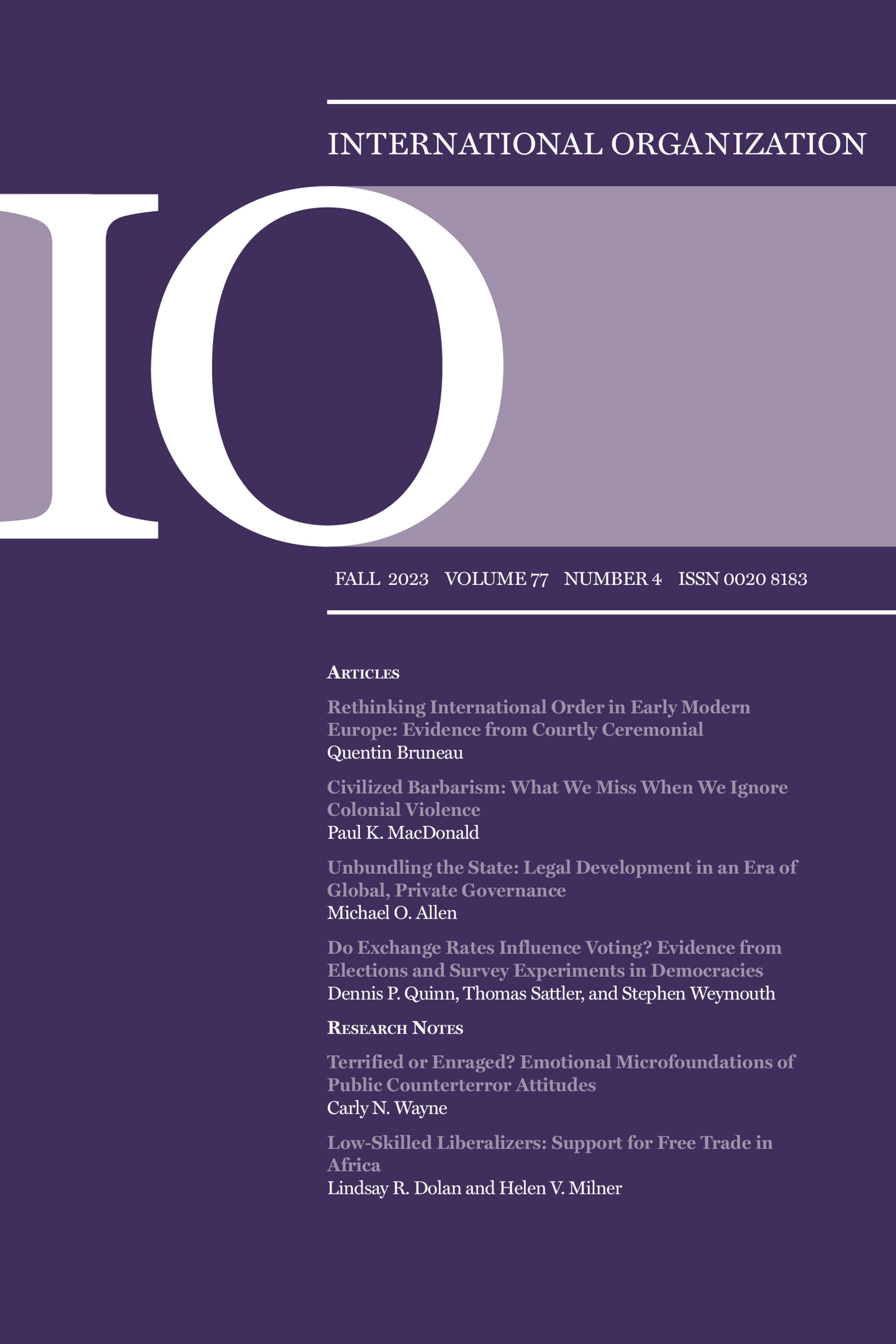Compensatory Layering and the Birth of the Multipurpose Multilateral IGO in the Americas
IF 4.5
1区 社会学
Q1 INTERNATIONAL RELATIONS
引用次数: 0
Abstract
Abstract International organizations come in many shapes and sizes. Within this institutional gamut, the multipurpose multilateral intergovernmental organization (MMIGO) plays a central role. This institutional form is often traced to the creation of the League of Nations, but in fact the first MMIGO emerged in the Western Hemisphere at the close of the nineteenth century. Originally modeled on a single-issue European public international union, the Commercial Bureau of the American Republics evolved into the multipurpose, multilateral Pan American Union (PAU). Contrary to prominent explanations of institutional genesis, the PAU's design did not result from functional needs nor from the blueprints of a hegemonic power. Advancing a recent synthesis between historical and rational institutionalism, we argue that the first MMIGO arose through a process of compensatory layering: a mechanism whereby a sequence of bargains over control and scope leads to gradual but transformative institutional change. We expect compensatory layering to occur when an organization is focal, power asymmetries among members of that organization are large, and preferences over institutional design diverge. Our empirical and theoretical contributions demonstrate the value a more global international relations (IR) perspective can bring to the study of institutional design. international relations (IR) scholars have long noted that international organizations provide smaller states with voice opportunities; our account suggests those spaces may be of smaller states’ own making.补偿分层与美洲多用途多边政府间组织的诞生
国际组织有多种形式和规模。在这一机构范围内,多用途多边政府间组织发挥着中心作用。这种机构形式通常可以追溯到国际联盟的创立,但事实上,第一个多边投资担保组织是在19世纪末出现在西半球的。美洲共和国商务局最初以单一议题的欧洲公共国际联盟为蓝本,后来演变成多目的、多边的泛美联盟(PAU)。与对制度起源的突出解释相反,PAU的设计既不是出于功能需求,也不是出于霸权国家的蓝图。我们提出了历史制度主义和理性制度主义之间的最新综合,认为第一个MMIGO是通过补偿分层的过程产生的:这是一种机制,通过控制和范围的一系列讨价还价导致渐进但变革性的制度变革。我们预计,当一个组织是焦点组织,组织成员之间的权力不对称很大,对制度设计的偏好出现分歧时,就会出现补偿分层。我们的实证和理论贡献表明,更具全球性的国际关系视角可以为制度设计研究带来价值。国际关系学者早就注意到,国际组织为小国提供了发声的机会;我们的报道表明,这些空间可能是较小的州自己制造的。
本文章由计算机程序翻译,如有差异,请以英文原文为准。
求助全文
约1分钟内获得全文
求助全文
来源期刊

International Organization
Multiple-
CiteScore
14.50
自引率
1.30%
发文量
25
期刊介绍:
International Organization (IO) is a prominent peer-reviewed journal that comprehensively covers the field of international affairs. Its subject areas encompass foreign policies, international relations, political economy, security policies, environmental disputes, regional integration, alliance patterns, conflict resolution, economic development, and international capital movements. Continuously ranked among the top journals in the field, IO does not publish book reviews but instead features high-quality review essays that survey new developments, synthesize important ideas, and address key issues for future scholarship.
 求助内容:
求助内容: 应助结果提醒方式:
应助结果提醒方式:


